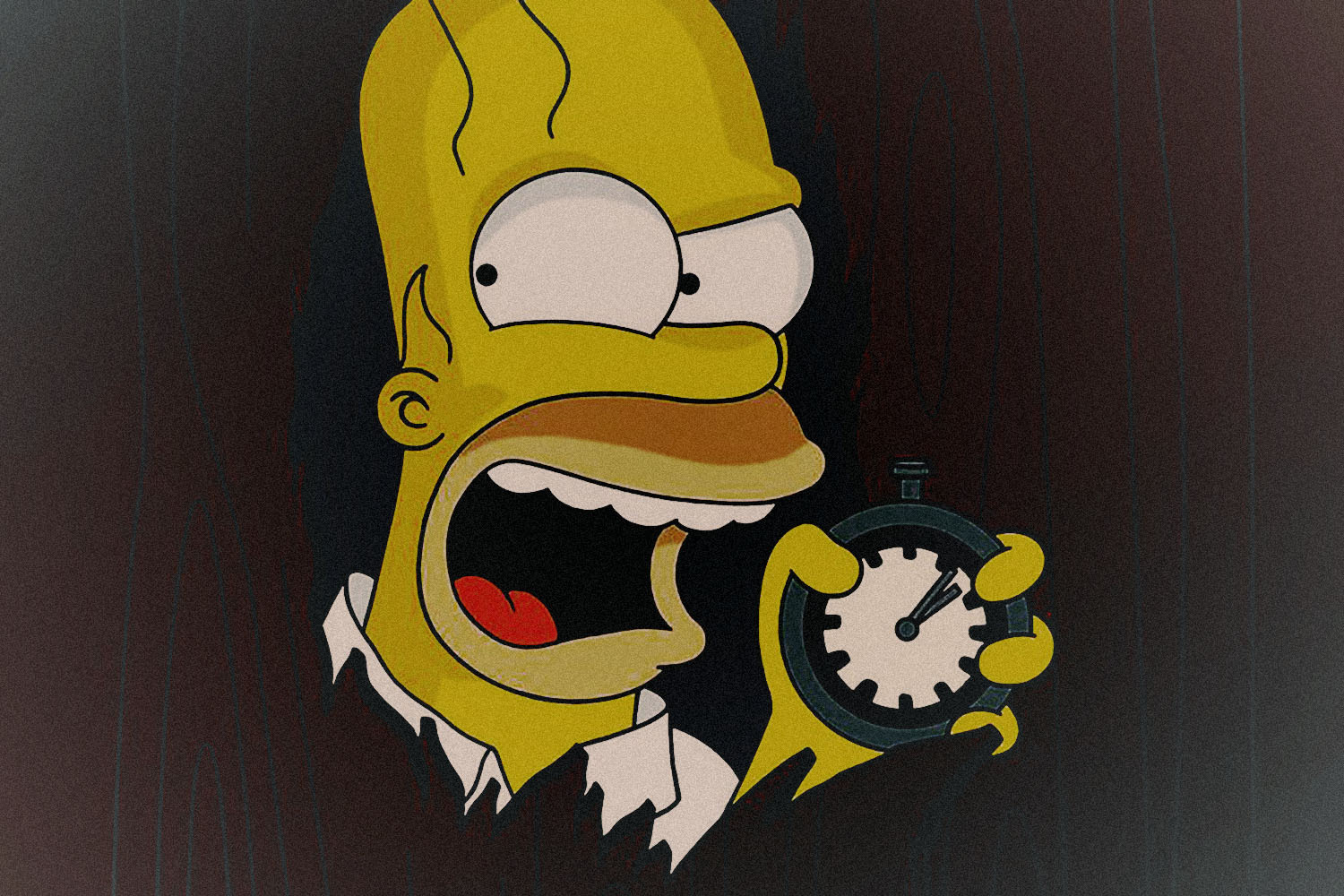When asked about Charles Schulz, the influential cartoonist behind Peanuts, Matt Groening was quoted as saying, “Charles Schulz, he’s an interesting case … [Peanuts] is simply drawn but has some really deep emotions you don’t expect in a silly-looking comic strip.”
For most people, the Simpsons creator might as well be speaking about his own work, which after three decades is still the most famous simply drawn, deeply emotional and silly-looking cartoon ever made.
Now in its 34th season, the show continues to enchant — and subsequently lose — viewers with each generation. There are your Simpsons, and then there are my Simpsons, depending on which season you began watching after school right up until the day you grew tired of them. Indeed, depending on whom you ask, The Simpsons hasn’t been good since 1999, the end of a Golden Age that saw off some of the production’s earliest writing staff. Some fans online suggest that it was best during its 15th season, and there are those who will argue that it has, in fact, never been better: satirizing the Trump administration (which it spookily predicted) and observing themes of identity politics for a new generation of viewers. The reason it remains relevant, and then irrelevant, for Generation-X, Millennials and Gen-Z at various moments is because the writing always adapts to contemporary society, with Springfield’s surreal, simple silliness always standing in as a metaphor that transmits American values and anxieties not just at home, but all over the world.
As a late Millennial, I might have moved on from watching The Simpsons a long time ago, graduating to South Park’s vulgar mature cynicism. And yet the show remains a warm comfort blanket, a throwback to a time when I couldn’t touch a textbook without filling it with squiggly sketches of Homer. Over the past year, these nostalgic impulses have been revived again. Not just because of the show itself or the infernal Disney shorts (abandon all hope, ye who stream), but because of Instagram.
Whenever there is a moment of shared feeling or cultural resonance — and there have been plenty during the pandemic — somebody will repost an image from one of the many Simpsons fan accounts that have flooded the platform. I follow roughly 18 of them, all specializing in various kinds of no-context screenshots from earlier seasons. There’s the panoramic @scenicsimpsons; @criminalsimpsons, which focuses on Springfield’s criminal underbelly; the 400k-strong community at @simpscns; @feministsimpsons; @simpsonsgems; @simpsons_drinks (which chronicles the show’s beverages); the curious @offsimpsonspupils; and my personal favorite, the gaudy @luxurysimpsons. And that’s just scratching the surface. These aren’t mere fan accounts, but visual essays and mood boards that explore specific themes from the show’s the animation.
“There are so many fan accounts, because everyone reads the show in their own way,” explains Ramon, the user behind @luxurysimpsons. “Going from the general to the most specific, they encompass all kinds of interests.” For this user, like this writer, there’s something hilarious about the way The Simpsons depicts the finer things in life: “Whenever the show involves luxury, it’s exaggerated, with gold, diamonds and wads of cash. For the earlier seasons, I like to believe it was the ’90s making fun of the excesses of the ’80s.” Ramon adds that, “The Simpsons is art not just because of its animation, but because of the cultural impact it generates … This is born out of the love the producers have for intellectual figures, from Hopper to Hemingway to Poe and even Tarantino, all while staying accessible to the regular viewer.”
The user behind @simpsonsgems expands on this, telling InsideHook that, “what congregates us to these kinds of profiles is not nostalgia, but the need to feel seen and recognized as capable of understanding sophisticated [intellectual], political and social satire, which is what The Simpsons originally stood for.” Indeed, one of the biggest criticisms of newer seasons is that this satire has been dumbed down.
The appearance of fan accounts for HBO’s Succession is another recent example of users reposting no-context clips from a popular and intelligent television show. As with The Simpsons, each shared image of Kendall in Margiela or Tom mid-breakdown announces to followers that they’re able to read between the lines (guilty as charged), as if they’re on the inside of some secret club of especially smart and observant superfans. Sometimes these interpretations are fun. Other times, sad; but they always capture something innately human.
“The Simpsons is really a show about the human condition,” @simpsonsgems says. “That’s why I started the account, and what I try to reflect on the profile,” showing a self-awareness behind the memes. Or as Groening himself put it (also conscious of his work’s meaning): “The characters are surprisingly likable … given how ugly they are.” Growing up with the cartoon, you can probably identify the characters’ human traits and flaws in yourself and those around you. Each one represents a vessel for a kind of persona or mood: Homer’s laziness, Bart’s rebelliousness, Lisa’s sanctimony, Marge’s blind selflessness, Smithers’s desperation, Mr Burns’s greed. This is why many no-context images from classic episodes encompass near-universal sentiments, why we all sort of “get it” at once without requiring a caption. The profiles and creators trust us to recognize these flawed characters and the world they inhabit; the satisfaction comes from then holding up a mirror to our own.
Scrolling through these accounts also presents the surreal aesthetic of that world. There are purple night skies and pink sofas, all of it crafting an almost Lynchian, Dali-esque desert of space and fantasy in which odd beings — like aliens and three-eyed fish — plausibly reside. The suburban American vision of the MTV generation (with the social anxiety of Falling Down and grunge rock) that made Bart such a counterculture icon remains in eternal limbo in Springfield. It’s this otherworldly alienation that makes Simpsons screenshots so relatable in something as strange as a pandemic. From an old grandfather clock in the family home (a silent metaphor for the passage of time) to the tragic Dirk Van Outen’s crumpled “Can I Borrow a Feeling” mixtape, there’s a lot of depth that might be lost on viewers when idly watching an episode. On Instagram, these moments are immortalized.
The show’s aesthetic is, like Groening remarked on Schulz’s Peanuts, silly-looking. But this is no doubt the highest praise. That The Simpsons’ world is still so resonant and personal, even for those of us who stopped watching years ago, emphasizes the genius in its simplicity. And with fans curating their own pictorial archives online in their spare time for millions of fans to share and contemplate, an organic project is developing on what contemporary American art is, and where it can be accessed today. The rise of these Simpsons fan accounts might just be Instagram at its most unexpectedly thoughtful.
This article was featured in the InsideHook newsletter. Sign up now.




















